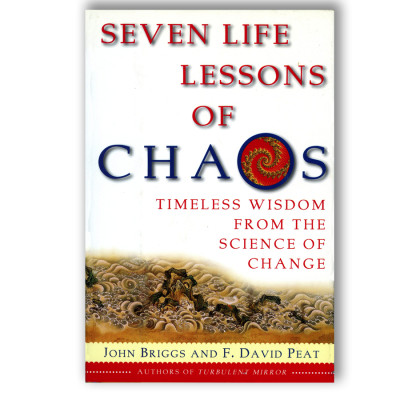Seven Life Lessons of Chaos
At one time or another we’ve all felt our lives were out of control and heading toward chaos. For us, science has striking news. Our lives are already in chaos—and not just occasionally but all of the time. What’s more, the new science suggests, an individual and collective understanding of chaos may dramatically change our lives.
Although we humans tend to abhor chaos and avoid it whenever possible, nature uses chaos in remarkable ways to create new entities, shape events and hold the universe together. This revelation about chaos was first made by scientists about 30 years ago and has been actively investigated since. But the real meaning of chaos for us, as individuals and as a society, is only now beginning to be explored.
Just what is chaos? The answer is many-faceted and will take a little explanation. To begin with, chaos turns out to be far subtler than the common-sense idea that chaos is the messiness of mere chance–the shuffling of a deck of cards, the ball bouncing around in a roulette wheel, or the loose stone cascading down a rocky mountainside. The scientific term chaos refers to an underlying interconnectedness that exists in apparently random event. Chaos science involves focuses on hidden patterns, nuance, the “sensitivity” of things, and on the “rules” for how the unpredictable leads to the new. It is an attempt to understand the movements that create thunderstorms, raging rivers, hurricanes, jagged peaks, gnarled coastlines and complex patterns of all sorts, from river deltas to the nerves and blood vessels in our bodies.
— From the Introduction to Seven Life Lessons of Chaos
“In their previous work, Turbulent Mirror, the authors gave us one of the best non-technical explanations of chaos and complexity theory. Now they have taken the next step, engaging us in wide-ranging and provocative meditations on chaos. This is an eloquent and utterly delightful book.”
— Fritjof Capra, author of The Tao of Physics and The Web of Life.
“The seed aspects of chaos theory are brilliantly integrated in this book into a broad perspective illuminating the nature of deep creativity. Chaos emerges not as a negative force, but as a perpetual and comprehensive creative process linking all aspects of life. I found it electrifying.”
— Suzi Gablik, author of The Reenchantment of Art and Conversations Before the End of Time
“John Briggs and F. David Peat are not so much authors as Zen wizards. As they dart and dance across the stage of their books, butterflies and burbling spring from their fingertips, flow together to become a tumult of clouds at sunset, which (after a moment) w’re stunnned to recognize as the birth of a galaxy in deep space. When the performance is over, we wonder, ‘How on earth did they do that’—and find that, after all, we’ve somehow caught the knack and are doing it ourselves!”
— Daniel Quinn, author of Ishmael
“If you want to know how you can apply the butterfly effect to change everything from your local surroundings to the global ecology, or set up your own feedback loop to improve everything from your career to your relationships, this is a wonderful book to guide you there. The new motto shall be ‘better living through chaos.'”
— Michael Shermer, publisher of Skeptic magazine and author of Why People Believe Weird Things
“Briggs and Peat do a wonderful and exciting job exploring the expansion of the chaos metaphor. This book should help liberate us from the constraints of modern and postmodern society.”
— Frederick David Abraham, author of Chaos Theory in Psychology
“Makes chaos not only understandable but actually usable. These seven lessons are worth taking—and taking to heart.”
—Ervin Laszlo, author of The Whispering Pond

